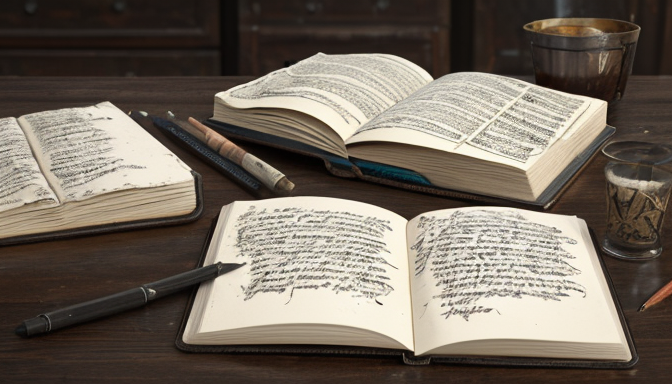Have you ever noticed how flawed characters seem to leap off the page or screen? Imperfections make them relatable, allowing us to see bits of ourselves in their struggles. Think about it: when was the last time you felt a deep connection to a perfect hero? Probably never! Flawed characters resonate because they mirror our own vulnerabilities and challenges. They remind us that it’s okay to stumble and fall; what truly matters is how we rise again.
When we encounter characters with flaws, we often find ourselves empathizing with their journeys. Psychologically, we crave authenticity, and perfection feels distant and unattainable. Flawed characters allow us to explore the complexity of human emotions, fostering a connection that is both profound and genuine. They make us laugh, cry, and sometimes even cringe, but isn’t that what makes a story unforgettable?
To craft these compelling characters, consider their backstories. A rich history filled with struggles and triumphs adds layers to their personality. For instance, a character who has battled addiction might exhibit traits of resilience and vulnerability. These characteristics not only create a believable persona but also engage readers on a deeper emotional level. By embracing their flaws, we can develop characters that are not just relatable but also inspiring. Remember, it’s the imperfections that often lead to the most captivating story arcs!
The Appeal of Flaws
Have you ever found yourself rooting for a character who just can’t seem to get it right? Flawed characters resonate with us because they are a reflection of our own struggles and imperfections. In storytelling, these characters often mirror real human experiences, making them relatable and authentic. When we see a character grappling with their own demons, it stirs a sense of empathy within us, prompting us to connect on a deeper level. Think about it: wouldn’t you rather cheer for someone who stumbles and learns from their mistakes than a perfect hero who never faces adversity?
Psychologically, our attraction to imperfection can be linked to several factors:
- Identification: We see parts of ourselves in their flaws.
- Growth: Flawed characters often embark on transformative journeys, making their arcs compelling.
- Realism: Life is messy; characters that reflect this reality feel more genuine.
Creating characters with rich backstories, alignment traits, and even mythological influences adds layers to their imperfections. For instance, a character who battles addiction might come from a troubled past, providing context for their struggles. This depth not only enhances the character’s relatability but also elevates the narrative, making it more engaging. In essence, the appeal of flaws lies in their ability to create emotional connections, allowing us to see the beauty in imperfection and the strength that can emerge from vulnerability.

Creating Depth Through Imperfection
When it comes to storytelling, the magic often lies in the flaws of characters. Think about your favorite novels or films; chances are, the characters that stuck with you weren’t perfect heroes, but rather individuals with a beautiful messiness that made them feel real. By crafting characters with rich backstories, we can create a tapestry of experiences that resonate with the audience. For instance, a character who struggles with addiction might reflect a broader theme of redemption, making their journey all the more compelling.
Moreover, aligning traits with their imperfections can further enhance their depth. Imagine a character who is fiercely loyal but also prone to jealousy. This duality not only makes them relatable but also drives the plot forward. Their internal conflicts can lead to dramatic tension, evoking empathy from the audience. It’s like watching a tightrope walker; you’re on the edge of your seat, rooting for them to find balance.
Lastly, incorporating mythological influences can add layers of meaning to flawed characters. For example, a character inspired by the tragic hero archetype can embody the struggle against fate, making their imperfections a crucial part of their identity. This invites readers to reflect on their own imperfections and the universality of human experience. In essence, imperfection is not just a flaw; it’s a gateway to deeper emotional connections and unforgettable storytelling.
Frequently Asked Questions
- Why are flawed characters more relatable?
Flawed characters reflect real-life struggles and imperfections, making them relatable to audiences. Just like us, they face challenges and make mistakes, which fosters a deeper emotional connection.
- How can I create a multi-dimensional flawed character?
To create a multi-dimensional flawed character, consider their backstory, motivations, and vulnerabilities. Give them unique traits that lead to both strengths and weaknesses, allowing readers to see their growth throughout the story.
- What role do flaws play in character development?
Flaws are crucial for character development as they drive the narrative forward. They create conflict and challenges that characters must overcome, leading to meaningful transformations and engaging story arcs.
- Can flaws make a character unlikable?
While flaws can make a character unlikable at times, they can also make them more human. A well-crafted flaw can evoke sympathy and understanding, allowing readers to root for their redemption.
- How do flawed characters enhance storytelling?
Flawed characters enhance storytelling by adding depth and complexity. Their imperfections create tension and intrigue, keeping readers invested in their journeys and making the narrative more compelling.

Recent Comments